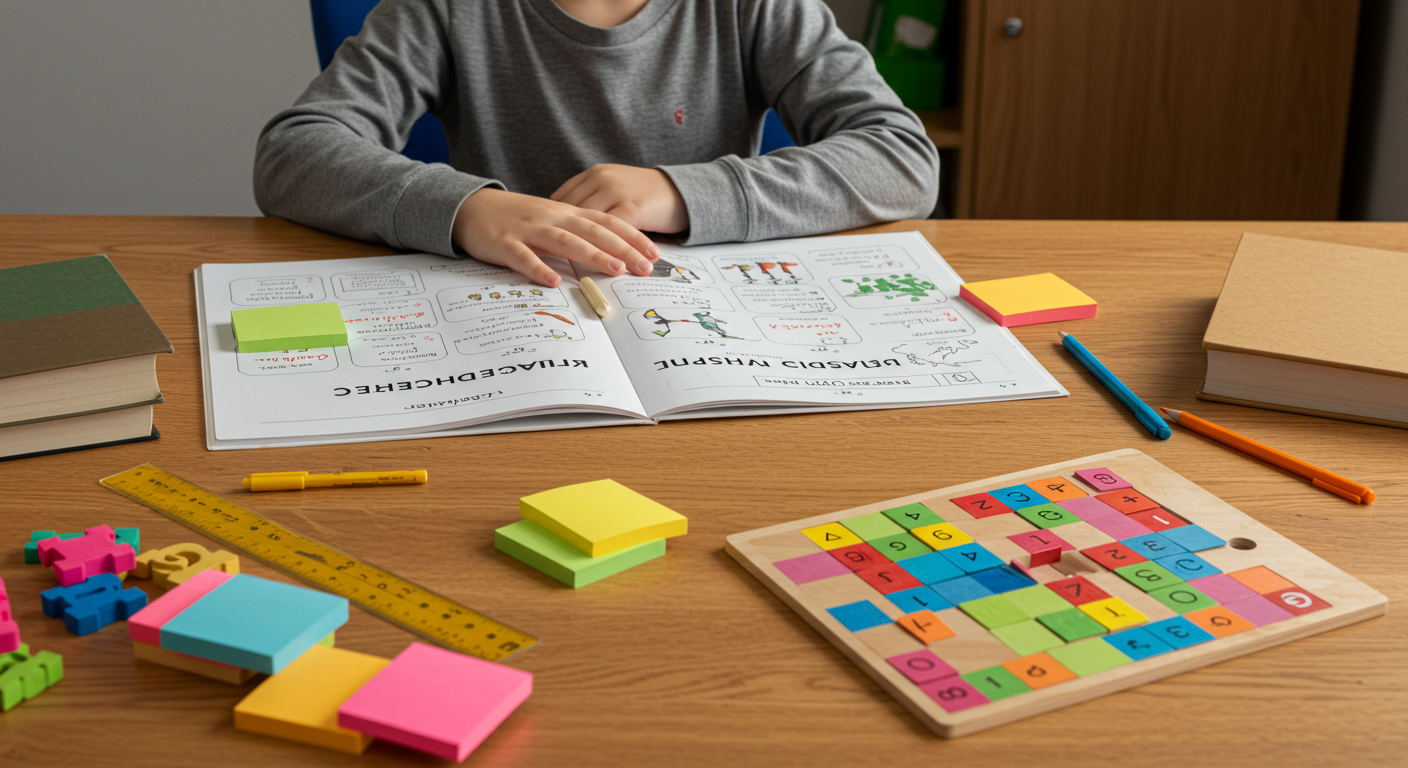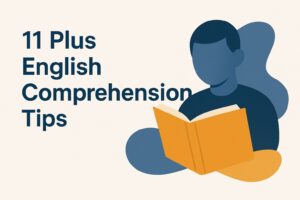
What Is the 11 Plus Entrance Exam and How Does It Work?
For many families, the 11 Plus exam can feel like a mysterious, high-stakes gateway to selective education. Whether you’re exploring grammar schools, aiming for an independent school, or just curious about your options, understanding exactly what the 11 Plus is—and how it works—can make the difference between guesswork and purposeful preparation.
Let’s break it down without the jargon.
1. What Is the 11 Plus Entrance Exam?

The 11 Plus (sometimes written as 11+) is an entrance exam used by many grammar schools and some independent schools in the UK to select pupils for Year 7 entry. It’s typically taken in the autumn term of Year 6, when children are 10 or 11 years old—hence the name.
Unlike SATs, which assess classroom learning, the 11 Plus measures how well a child can apply knowledge and problem-solve under pressure. It’s designed to identify academically able pupils who would thrive in a more rigorous academic environment.
Not all areas of the UK use the 11 Plus. Some counties have retained fully selective grammar schools, while others no longer offer them. That means one family might be surrounded by selective options, while another won’t encounter the term “11 Plus” at all.
2. Who Takes the 11 Plus and Why?
The 11 Plus is typically taken by pupils in Year 6 who are hoping to enter a grammar school in Year 7. Some independent schools also use a similar exam—or include the 11 Plus as part of their broader admissions process.
In grammar school regions like Kent, Buckinghamshire, Lincolnshire, and parts of Greater London, taking the 11 Plus is often seen as the normal route for ambitious students. In other areas, it may be optional or only relevant for specific schools.
Why do parents pursue it? Because grammar schools are state-funded but selective. That means they often offer the academic standards of top-tier schools—without the price tag of private education.
3. What Subjects Are Covered in the 11 Plus Exam?

Although the specific content varies between exam boards and schools, most 11 Plus exams cover four core subject areas:
-
English: Typically tests reading comprehension, vocabulary, grammar, and sometimes spelling or punctuation. Some schools also include creative writing tasks.
-
Mathematics: Covers topics up to and including Year 6 National Curriculum, but often requires faster-paced problem-solving and application under time pressure.
-
Verbal Reasoning: This tests how well a child can work with words and language patterns. It includes logic puzzles using words, synonyms, antonyms, codes, sequences, and analogies.
-
Non-Verbal Reasoning: Involves pattern recognition, spatial awareness, and logic using images or diagrams rather than words. It’s often unfamiliar but highly coachable.
Some schools may only test English and Maths, while others require all four areas. It’s crucial to find out which subjects are relevant to your chosen school before you begin focused preparation.
4. Which Exam Boards Are Involved?
There isn’t one single 11 Plus exam provider—there are several.
The two most widely used are:
-
GL Assessment: This board provides subject-specific papers in English, Maths, Verbal Reasoning, and Non-Verbal Reasoning. GL tests tend to be more predictable in structure, and practice materials are widely available.
-
CEM (Centre for Evaluation & Monitoring): Originally developed by Durham University, these papers were designed to be “tutor-proof” and place greater emphasis on problem-solving and mixed-format questions. CEM papers often include comprehension, numerical reasoning, and cloze exercises, with limited official practice material.
Additionally:
-
ISEB Pre-Test: Used mainly by independent schools, the ISEB Common Pre-Test is computer-based and adaptive. It includes English, Maths, Verbal Reasoning, and Non-Verbal Reasoning, and is usually sat earlier (in Year 6) as part of a multi-stage admissions process.
Some schools adapt or combine these formats, so it’s essential to check what your target school or region uses. Never assume the content or style without confirmation.
5. How Is the 11 Plus Scored and Ranked?

This part can be confusing, but here’s the simple version.
Raw marks (how many answers your child gets correct) are converted into standardised scores. This allows for small differences in age—so a child born in August isn’t directly compared to one born the previous September.
Most regions use a scoring system where 100 is the average score, and passing scores usually fall somewhere between 110 and 121 depending on the local authority or school.
It’s not just about passing either. In highly competitive areas, your child may pass the test but still not gain entry if they fall short of the top percentile needed for admission. Some schools also rank by distance, siblings, or other criteria alongside test results.
6. What Happens on 11 Plus Exam Day?
The day of the 11 Plus can feel like a lot—for both parents and children. But knowing what to expect can ease a lot of the stress.
Most grammar school exams are sat in early autumn of Year 6 (often September), and your child will typically be invited to take the test either at a local test centre, the school they’re applying to, or occasionally at their current primary school.
Depending on the school or region, the test may be:
-
Paper-based: With multiple-choice or written-answer formats.
-
Computer-based: Especially for independent schools using the ISEB Pre-Test.
Children may sit the entire exam in one day, or across two sessions (e.g. English and Maths one day, reasoning the next). Each paper usually lasts 45–60 minutes, with breaks between.
Expect a formal but supportive environment. Schools want to create calm surroundings, not intimidation. There are invigilators, clear instructions, and in many cases, sample questions or warm-up exercises to settle nerves.
7. How Do You Know Which Exam Your Child Will Sit?

This is one of the most common—and crucial—questions. Because the 11 Plus is not a single national test, you must confirm what format your child will face based on the specific schools you’re applying to.
Here’s how to find out:
- Check the grammar school’s website: Most have a dedicated admissions or 11 Plus section.
- Look at your local authority’s education portal: Especially if you’re in a grammar school region like Kent, Bucks, or Trafford.
- Contact the school directly: For clarification about exam boards, subjects, or test dates.
- Download information booklets: Many independent and selective schools release detailed admissions PDFs each year.
You need to know:
- Which exam board they use (GL, CEM, ISEB, in-house)
- Whether there’s a creative writing component
- If all four subject areas are tested, or just a subset
This research should happen before serious preparation starts—otherwise, your child may waste time studying for question types they’ll never encounter.
8. Can You Prepare for the 11 Plus?
This is the question that splits opinion. Some say the 11 Plus is designed to reveal “natural ability.” But in practice, almost every child sitting the exam has done some form of preparation—and most schools expect it.
The real issue isn’t whether to prepare. It’s how to do it well.
Smart preparation includes:
- Strengthening English and Maths fundamentals
- Introducing reasoning-style questions gradually
- Building familiarity with test format and timing
- Developing calm, focused test-day behaviour
- Practising under pressure—but without panic
Tutoring, workbooks, online platforms, and mock exams all play a role. But none replace core skills like reading fluently, solving problems logically, and working through setbacks.
Want a deeper breakdown? See our guide on what should be in an 11 Plus study plan.
9. What If Your Child Doesn’t Pass?

It’s worth being realistic: not every child passes the 11 Plus, and that doesn’t mean they’ve failed.
Here’s what to keep in mind:
- The 11 Plus is selective by design—it filters, not just tests.
- Many bright children are “borderline”—a missed question or two can shift a score below cut-off.
- Some schools offer appeals, second rounds, or waiting lists.
- A non-pass doesn’t close every door. Other strong schools may offer different paths.
In some cases, private schools may still offer a place even if the child didn’t pass another 11 Plus-style exam—especially if interviews, reports, or references are strong.
10. Final Thoughts: Knowing the System = Lowering the Stress

Parents often feel that the 11 Plus is shrouded in mystery. But once you understand how it works, it becomes much less intimidating—and much more manageable.
Here’s what matters most:
- Understand which exam board and format your child will sit.
- Confirm the subjects and components being tested.
- Learn how the exam is scored and standardised, especially if your child is summer-born.
- Prepare with focus—but not fear.
And most importantly, remember this: The 11 Plus is just one part of a much longer educational journey. The skills your child develops in preparing for it—resilience, reasoning, time management—will benefit them well beyond a test result.
FAQs: What Is the 11 Plus Entrance Exam and How Does It Work?
1. Who is the 11 Plus exam for?
It’s designed for Year 6 pupils applying to grammar schools or selective independent schools in the UK.
2. What does the 11 Plus test?
It usually covers English, Maths, Verbal Reasoning, and Non-Verbal Reasoning. Some schools also test creative writing.
3. Are all 11 Plus exams the same?
No. The format varies depending on the school or region. Some use GL or CEM papers, while others create their own.
4. When is the 11 Plus exam taken?
Most children sit it in September of Year 6, though exact dates depend on the school or local authority.
5. Can children prepare for the 11 Plus?
Yes, absolutely. Preparation helps build confidence and familiarity with question types and timing.
6. What is a passing score for the 11 Plus?
It varies. Some schools require a score above 110, others set cut-offs based on rankings or catchment areas.
7. What happens if my child doesn’t pass?
They can still go to a non-selective school or apply to private schools that offer interviews and broader assessments.



